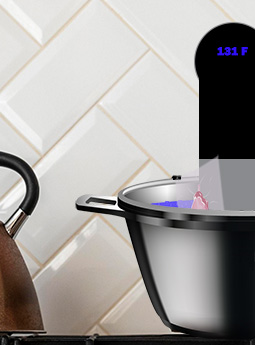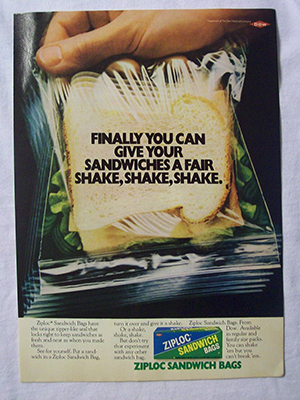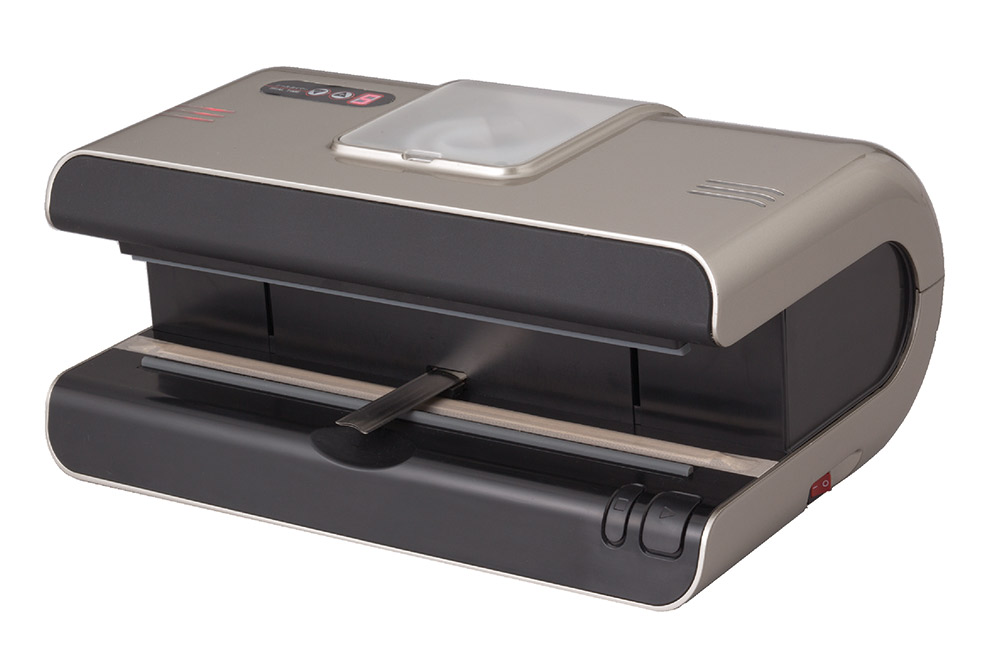
Sous Vide Cooking
Sous Vide Cooking with your Home Vacuum Sealer
The trendy cooking technique that is taking steaks to the next level.
You might not have heard the term "Sous Vide" before (pronounced SU-VEE), but you have probably seen pictures or videos of people putting their food inside a vacuum-sealed pouch to submerge in boiling water and thought, "Something strange is happening here." Translated to "under vacuum" from French, this cooking technique is based around the idea that if you can perfectly control the temperature environment surrounding your food, you can get more fine control over your final results. Conventional cooking involves many different elements: For stovetop you have a heating element adding heat to a pot or pan, and having that surface contact along with any changes to the surrounding air to raise the temperature of the food. Even in a convection oven, the circulating air is inconsistent, and varies a shocking amount in all but the most high-end of units. To solve this issue, sous vide was born. By removing the air in the pouch and submerging the food in temperture regulated, circulating water, you ensure your food is surrounded by the target temperature for the entirety of the cooking process. No more worrying about overcooking or losing track of the temperature - you have precise control.

Getting the Most out of Your Sous Vide Machine
You need 3 things to start practicing sous vide at home: A souse vide machine, a vacuum sealer with bags, and finally, something to cook! The dedicated machine is designed to sit in a standing container of water, circulating the water while heating it to the desired temperature. While there are more do-it-yourself options, this machine gives you complete control. Once you have the water heated and cuirculating, you are ready to start prepping to cook.
To seal your product, you need a plastic bag that can be sealed to remove the oxygen. Some home cooks make do by placing their food in a ziplock bag, and placing it in the bath of water until just one open corner is left above the surface. This quick and easy trick will get the majority of the air out of a pouch. While this is a great trick for everyday storage, if you are planning on using quality food, you don't want to risk anything making the process go awry. This is where a proper vacuum sealing machine comes in. By making sure the vacuum removes all the air from the pouch, you minimize the variables that would come between you and a perfectly cooked piece of meat. The material used by vaccum sealers is also more reliable than your average ziplock bag. When cooking with this method, the pouch needs to be submerged for hours at a time in heated water. With simple and easy options like the Hippo Retractable Nozzle Home Vacuum Sealer, there are plenty of ways to make sure your next sous vide meal is a hit.

Cooking Tips
Because the majority of the cooking is done in a pouch submerged under water, you need to think ahead a about how you want to season your meal. While many people think this makes things more difficult, the pouch makes for a great way to get the same flavors you love in a a new way.
Season before you cook: While seasoning your protein before applying heat is a well known tip, in sous vide you have a little extra room to consider. If you love making steaks with some fresh tyme or rosemerry, simply throw a spring in with the steak! Rather than cooking with butter, you can add a pat, along with salt, pepper and garlic as well to give you all the flavors you might expect. By placing the ingredients in the bag with the meat you allow those ingredients to get the same heat time to get cooking. And with a vacuum inside, melting butter or other juices can circulate and permiate the meat in ways you would normally have to merinate to get. Just make sure everything that goes in is fresh, and does not mind prolong exposure to heat.
Sear after you cook: The real secret to getting the last 10% to a perfect meal is a quick sear after cooking. When mean is exposed to intense heat, it results in a mayard reaction with the surface - resulting in complex flavors and textures from that sear. When your protein first comes out of the bag youwill see it is a faded color from the long cooking process. Searing the outside ensures that while the ENTIRE peice is cooked to the target temp, You still want a crust for the final flavor profile and visual touch. If you pouched other herbs and sauces, you can pour those into the pan to adorn your finished meal.
Last Steps
Once you experience the world of Sous Vide cooking, it gets a little hard to stop. Looking through cookbooks, there are so many recipies that looked to complicated that suddenly seem doable. Want tender scalops everytime? How about an easier way to extract spices or herbs into butter/other liquids? The combination of a quality vacuum sealer, and sous vide machine will change the way you look at cooking forever. Just remember to keep the space inside compact - too many items or space between can cause oxygen to be trapped inside during the sealing process. The easiest way to avoid headaches is to make sure you are using the right vacuum bags and sealer to get the vacuum you need. If you already have a home unit, we have textured bags that can be used on most commercial models. Those of you looking to take the next big step should take a look at our Hippo Vacuum Sealer with Retractable Nozzle. With a retractable nozzle, this unit gives you the power to vacuum seal the perfect sous vide pouch, but the flexibility to seal other home items that don't need a vacuum.
IMPAK’s zip lock bag capabilities are not limited to the zipper profiles listed above. With over 10 million bags in inventory, we can most often supply a resealable bag that will work, but when a standard size will not meet the needs of our customer, or when a specific material is required, we can provide a custom order. Contact IMPAK for custom print, size, or material. Phone: (310) 715-6600, Email: flprocessing@impakcorporation.com

